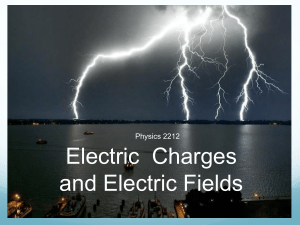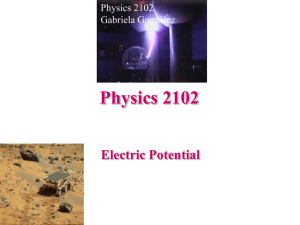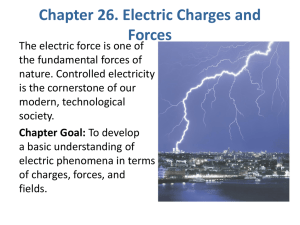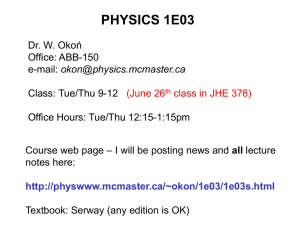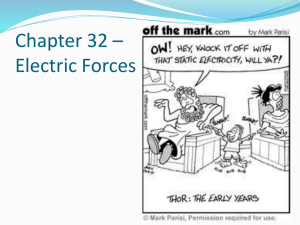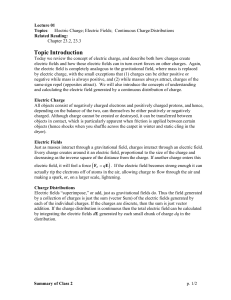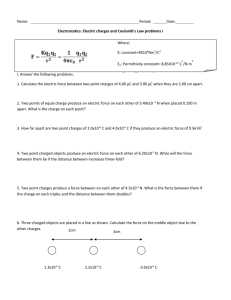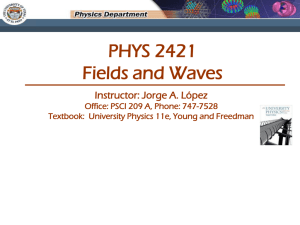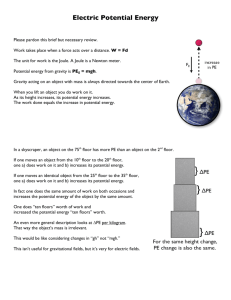reading summary
advertisement
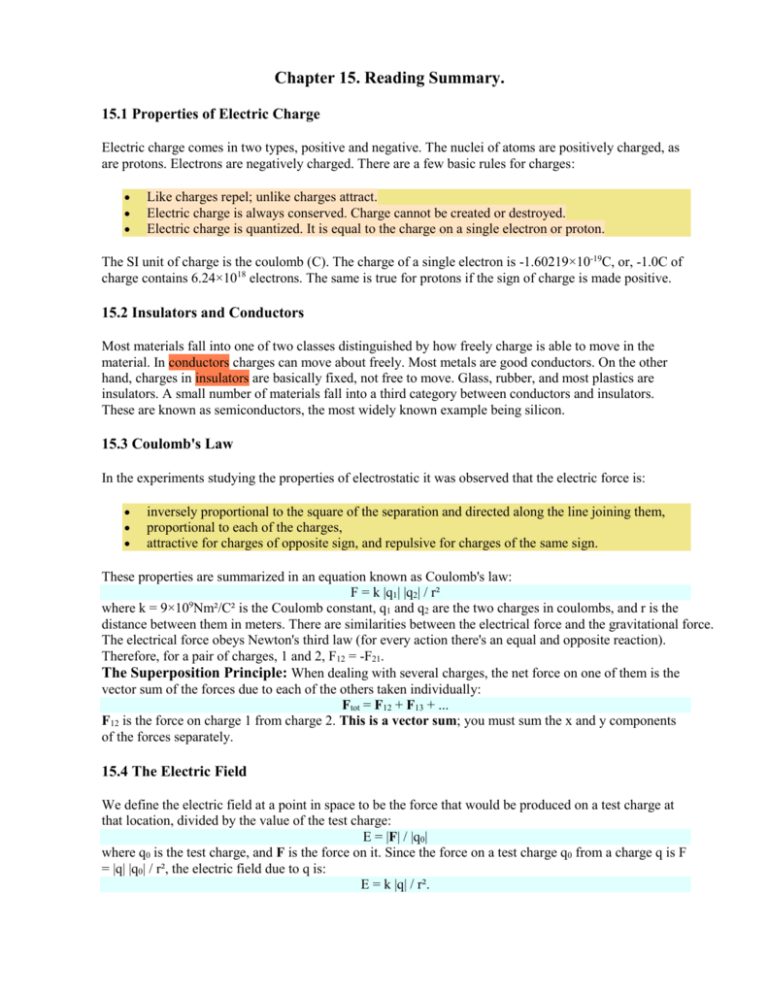
Chapter 15. Reading Summary. 15.1 Properties of Electric Charge Electric charge comes in two types, positive and negative. The nuclei of atoms are positively charged, as are protons. Electrons are negatively charged. There are a few basic rules for charges: Like charges repel; unlike charges attract. Electric charge is always conserved. Charge cannot be created or destroyed. Electric charge is quantized. It is equal to the charge on a single electron or proton. The SI unit of charge is the coulomb (C). The charge of a single electron is -1.60219×10-19C, or, -1.0C of charge contains 6.24×1018 electrons. The same is true for protons if the sign of charge is made positive. 15.2 Insulators and Conductors Most materials fall into one of two classes distinguished by how freely charge is able to move in the material. In conductors charges can move about freely. Most metals are good conductors. On the other hand, charges in insulators are basically fixed, not free to move. Glass, rubber, and most plastics are insulators. A small number of materials fall into a third category between conductors and insulators. These are known as semiconductors, the most widely known example being silicon. 15.3 Coulomb's Law In the experiments studying the properties of electrostatic it was observed that the electric force is: inversely proportional to the square of the separation and directed along the line joining them, proportional to each of the charges, attractive for charges of opposite sign, and repulsive for charges of the same sign. These properties are summarized in an equation known as Coulomb's law: F = k |q1| |q2| / r² 9 where k = 9×10 Nm²/C² is the Coulomb constant, q1 and q2 are the two charges in coulombs, and r is the distance between them in meters. There are similarities between the electrical force and the gravitational force. The electrical force obeys Newton's third law (for every action there's an equal and opposite reaction). Therefore, for a pair of charges, 1 and 2, F12 = -F21. The Superposition Principle: When dealing with several charges, the net force on one of them is the vector sum of the forces due to each of the others taken individually: Ftot = F12 + F13 + ... F12 is the force on charge 1 from charge 2. This is a vector sum; you must sum the x and y components of the forces separately. 15.4 The Electric Field We define the electric field at a point in space to be the force that would be produced on a test charge at that location, divided by the value of the test charge: E = |F| / |q0| where q0 is the test charge, and F is the force on it. Since the force on a test charge q0 from a charge q is F = |q| |q0| / r², the electric field due to q is: E = k |q| / r². The electric field is a vector quantity, and, by convention, it points in the same direction as would the force produced on a positive test charge. The electric field has units of N/C. The electric field obeys the superposition principle. Therefore, the net electric field due to two or more charges is given by summing the electric field produced by each charge individually. 15.5 Electric Field Lines We can graphically represent the electric field at all points in space by drawing field lines. Note: The electric field vector, E, is tangent to the electric field lines at each point. The magnitude of the electric field is proportional to the density of field lines near a particular location. The electric field lines of an isolated positive charge point radially outward. For an isolated negative charge the lines point radially inward. For more complicated arrangements of charge, the lines are normally curved. There are some rules to follow for drawing electric field lines: 1. The lines must begin on positive charges (or infinity), and end on negative charges (or infinity). 2. The number of lines drawn leaving a positive charge or entering a negative charge is proportional to the magnitude of the charge. 3. No field lines can cross. 15.6 Conductors in Electrostatic Equilibrium The ability of charges to move freely in a conductor results in some special properties. 1. 2. 3. 4. The electric field is zero everywhere inside the conductor. Any excess charge on an isolated conductor resides entirely on its surface. The electric field just outside a charged conductor is perpendicular to the conductor's surface. On an irregularly shaped conductor, the charge tends to accumulate at locations where the radius of curvature of the surface is smallest, that is, at sharp points. 15.8 The Oscilloscope The oscilloscope is a device used to make electronic measurements. The essential component of it is a cathode ray tube (CRT). The main components of CRT are the cathode (which emits electrons), a collimator, a fluorescent screen, and two pairs of deflecting plates. A uniform electric field is formed in between the plates which deflect the beam of electrons passing through it. By varying the electric field in between the deflecting planes we can change a position of electrons hitting the fluorescent screen, i.e. form images. 15.10 Electric Flux Consider a region of uniform electric field, and a surface of area A perpendicular to the field. We define the flux as the amount of electric field passing through this area: =EA where E is the value of the electric field in N/C and A is the area in m². The flux has units of Nm²/C. If the surface is not perpendicular to the field then the flux is given by: = E A cos where is the angle between the perpendicular to the surface and the electric field.


